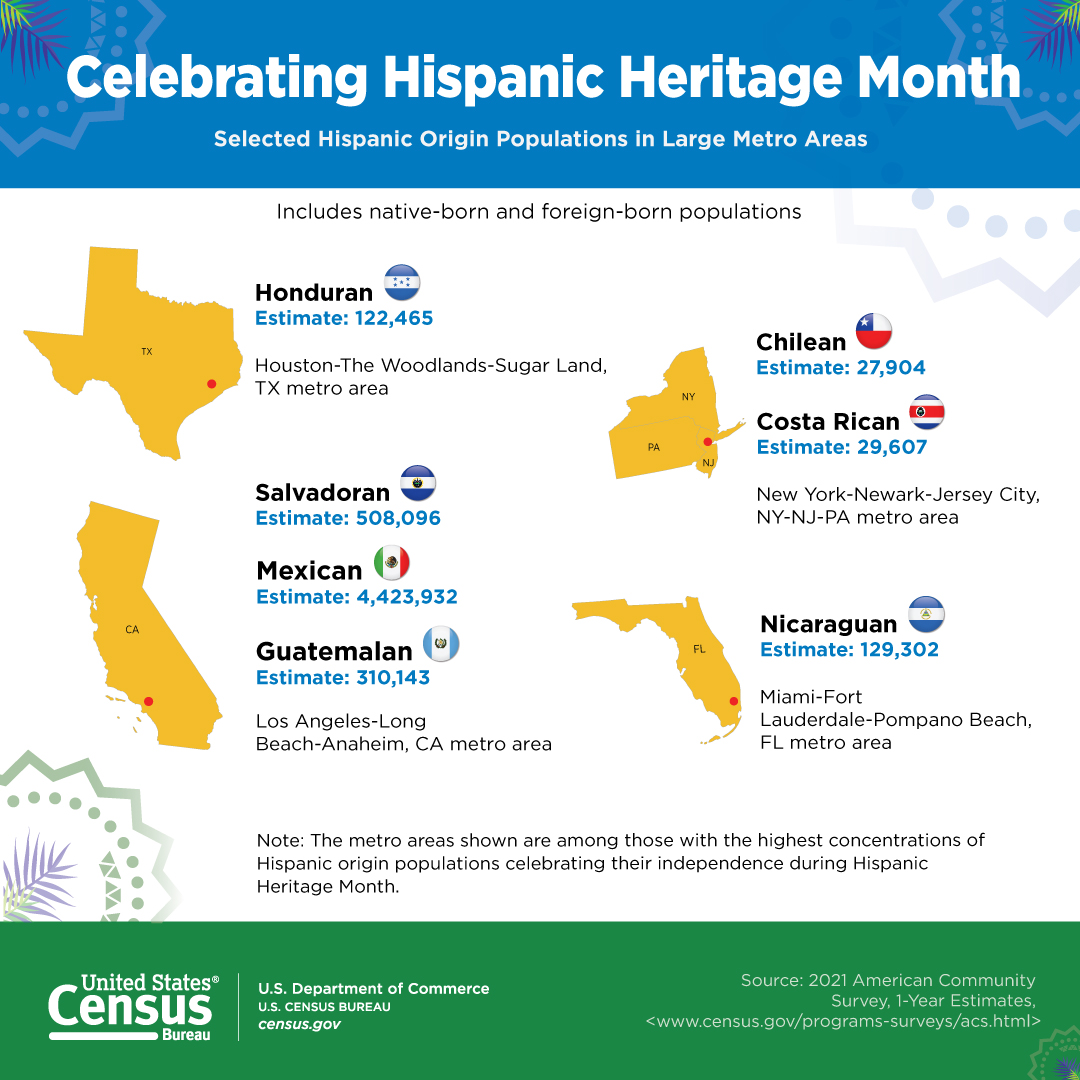Hispanic Heritage Month 2022
Hispanic Heritage Month recognizes and celebrates the contributions Americans tracing their roots to Spain, Mexico, Central America, South America, and the Spanish-speaking nations of the Caribbean have made to U.S. society and culture. The observance was born in 1968, when Congress authorized the president to issue an annual proclamation designating National Hispanic Heritage Week. Two decades later, lawmakers expanded it to a monthlong celebration, stretching from September 15 to October 15.
The timing is key. Hispanic Heritage Month — like its shorter precursor — always starts on September 15, a historically significant day that marks the anniversary of independence of five Latin American countries: Costa Rica, El Salvador, Guatemala, Honduras, and Nicaragua. The designated period is also a nod to those from Mexico and Chile, which celebrate their independence September 16 and September 18, respectively.
The following facts are available thanks to the public’s invaluable participation in U.S. Census Bureau surveys. We appreciate the information shared by each respondent as we continuously count and measure America’s people, places and economy.
Did You Know?
62.6 million
The Hispanic population of the United States as of July 1, 2021, making people of Hispanic origin the nation’s largest racial or ethnic minority — 18.9% of the total population.
Source:
13
The number of states with a population of one million or more Hispanic residents in 2021 — Arizona, California, Colorado, Florida, Georgia, Illinois, New Jersey, New Mexico, New York, North Carolina, Pennsylvania, Texas, and Washington.
Source:
34,289
The increase (from July 1, 2020 to July 1, 2021) in the number of Hispanics in Riverside County, California, the county with the nation’s greatest growth in this population during this period.
Source:
30.5
The median age of the Hispanic population, up from 30.2 in 2020.
Source:
More Stats
There is a detailed profile of the Hispanic population available from the 2021 American Community Survey, including data on:
- Families.
- Housing.
- Languages.
- Education.
- Jobs.
- Income and Poverty.
- Health Insurance.
Previous Facts for Features
Observances in our Facts for Features series:
- National Black History Month (February)
- Women's History Month (March)
- Irish-American Heritage Month (March)
- Asian American and Pacific Islander Heritage Month (May)
- The Fourth of July
- Anniversary of Americans With Disabilities Act (July 26)
- National Hispanic Heritage Month (Sept. 15 – Oct. 15)
- Halloween (Oct. 31)
- National Native American Heritage Month (November)
- Veterans Day (Nov. 11)
- Holiday Season (November — December)
Editor’s note: These data come from a variety of sources and may be subject to sampling variability and other sources of error. We generally release Facts for Features about two months before observances to accommodate magazine production timelines. For more information, contact the Census Bureau’s Public Information Office at (301)763-3030 or <[email protected]>.
Profile America's Facts for Features provides statistics related to observances and holidays not covered by Stats for Stories. For observances not listed above, visit our Stats for Stories webpage.
Stats for Stories provides links to timely story ideas highlighting newsworthy Census Bureau statistics that relate to current events, observances, holidays and anniversaries. The story ideas are intended to assist the media in story mining and producing content for their audiences. Dates with presidential proclamations are marked with (P).







